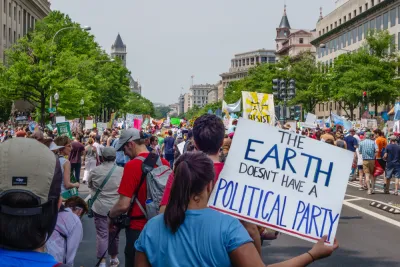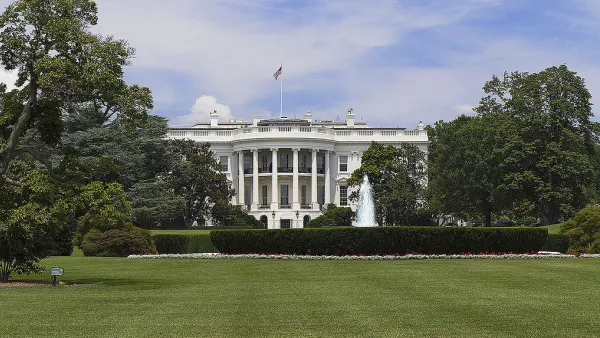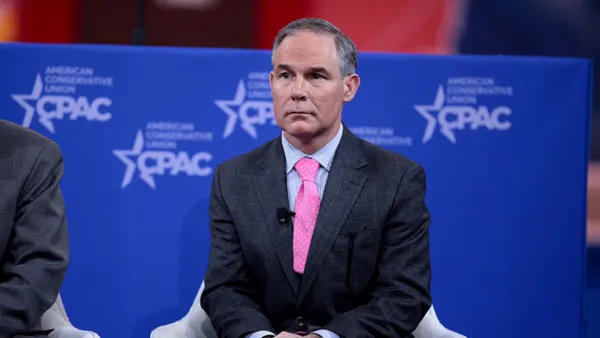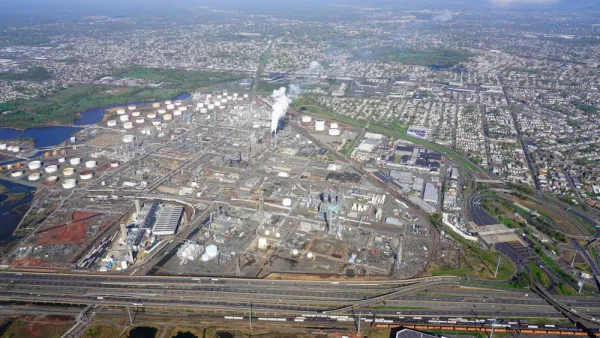How can President Trump, who has made environmental regulation rollbacks and climate denial trademarks of his administration, be expected to select projects for his infrastructure plan that must weather climate change?

The Trump infrastructure plan, expected to be unveiled Monday, hopes to leverage $200 billion to generate $1.5 trillion. In addition to achieving that financial feat, it must consider the outcome of selecting projects should, like the administration, they ignore climate science.
Unlike Trump and many in his cabinet who question the existence of global warming (or think that it is beneficial), infrastructure projects are expected to hold up to weather, which is changing due to climate change.
"The Trump infrastructure blueprint is almost certain to call for expensive new roads, bridges, airports and other projects in areas that are increasingly vulnerable to rising waters and other threats from a warming planet," reports Coral Davenport, who covers energy and environmental policy, with a focus on climate change, for The New York Times, on Feb. 10.
Engineers and researchers say that construction plans should consider these design constraints at the outset
“The impact of not considering climate change when planning infrastructure means you end up building the wrong thing, in the wrong place, to the wrong standards,” said Michael Kuby, a professor of geographical sciences and urban planning at Arizona State University and contributing author to the National Climate Assessment, the federal government’s most comprehensive scientific study of the effect of global warming on the United States. “That’s a whole lot of waste.”
Davenport reports that while U.S. Environmental Protection Agency Administrator Scott Pruitt may deny climate science, a report prepared by his agency last year for the Fourth National Climate Assessment "concluded that, through the end of the century, up to $280 billion will be needed to adapt the nation’s roads and railways to the effects of a warming climate."
It provides analysis showing that “proactive adaptation” — essentially, planning for global warming before you build — could save the government up to 70 percent in future costs of repairing damage caused by climate change-driven weather events such as deluges, coastal flooding and heat waves.
Davenport sites specific infrastructure projects which need to be designed for what the climate is expected to be like in 25 to 50 years.
“If you don’t do that,” said Paul Chinowsky, a professor of civil engineering at the University of Colorado, Boulder, “It could double the cost of maintenance and the amount of delays on that road.”
The situation is similar to planning the rebuilding efforts following Hurricane Harvey last August which occurred a mere two weeks after Trump signed an executive order that gutted "the Obama-era Federal Flood Risk Management Standard, which set higher resiliency standards for projects that receive federal funds and are vulnerable to sea-level rise," according to Planetizen.
Hat tip to Mark Boshnack.
FULL STORY: Trump’s Infrastructure Plan May Ignore Climate Change. It Could Be Costly

Analysis: Cybertruck Fatality Rate Far Exceeds That of Ford Pinto
The Tesla Cybertruck was recalled seven times last year.

National Parks Layoffs Will Cause Communities to Lose Billions
Thousands of essential park workers were laid off this week, just before the busy spring break season.

Retro-silient?: America’s First “Eco-burb,” The Woodlands Turns 50
A master-planned community north of Houston offers lessons on green infrastructure and resilient design, but falls short of its founder’s lofty affordability and walkability goals.

Test News Post 1
This is a summary

Analysis: Cybertruck Fatality Rate Far Exceeds That of Ford Pinto
The Tesla Cybertruck was recalled seven times last year.

Test News Headline 46
Test for the image on the front page.
Urban Design for Planners 1: Software Tools
This six-course series explores essential urban design concepts using open source software and equips planners with the tools they need to participate fully in the urban design process.
Planning for Universal Design
Learn the tools for implementing Universal Design in planning regulations.
EMC Planning Group, Inc.
Planetizen
Planetizen
Mpact (formerly Rail~Volution)
Great Falls Development Authority, Inc.
HUDs Office of Policy Development and Research
NYU Wagner Graduate School of Public Service




























